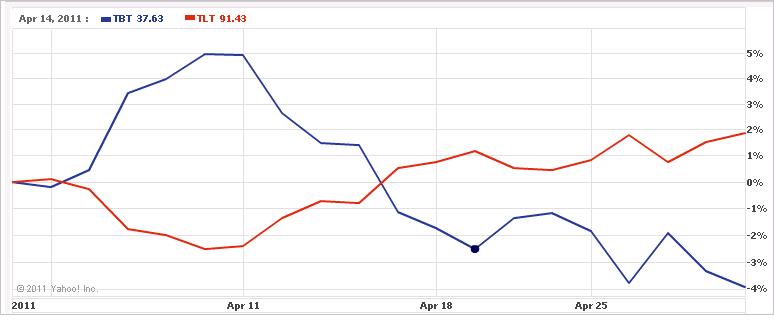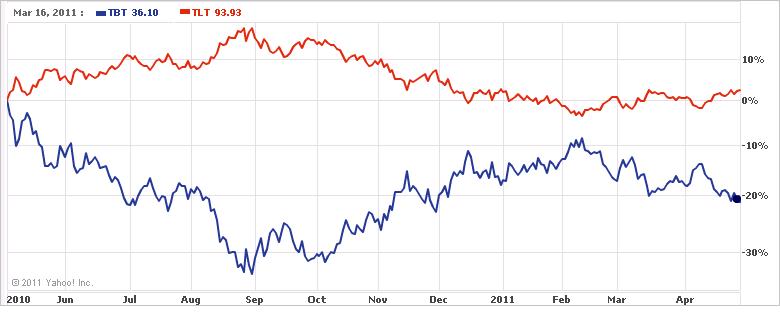During the summer of 2006 the Securities and Exchange Commission (SEC) allowed the first leveraged exchange traded funds (ETFs) to be traded. Leveraged ETFs, which use borrowed capital and investor equity, attempt to provide a multiple of the daily return of an underlying index that it tracks. The leverage employed is typically either a multiple of two or three depending on the stated structure of the ETF. While leveraged ETFs, by their very nature, employ leverage over time they will provide a different return than would otherwise be achieved by owning the same underlying index and and using independent, outside, leverage. In fact over the long term the return from a leveraged ETF can be very different than purchasing a non-levered ETF and using outside leverage.
Why purchasing a leveraged long or short ETF is not the same as purchasing or shorting an ETF using independant leverage
At the end of every day the manager of a daily levered ETF has to re-balance the fund. He does this by buying or selling some of the underlying to ensure that, at the start of the next day, the investment is levered at the stated daily leverage ratio. If the price of the underlying goes up, the ETF manager has to purchase more of the underlying. If the underlying goes down in price the ETF manager has to sell some of the underlying. The ETF manager does this to ensure that the leverage ratio remains constant, i.e. 2x or 3x. If the investor simply had bought a non-levered ETF, used outside leverage and did not increase or decrease the original leverage amount then he is allowing the leverage ratio to deviate from the initial level. By allowing the leverage ratio to float, there is no need to buy or sell more of the underlying based on the change in price of the underlying.
Implications of holding a levered ETF for multiple days
A levered ETF will under perform a non-levered version coupled with outside leverage:
- If the price of the underlying moves up and down a lot closing higher one day, lower the next, higher the next, etc. (i.e. the underlying exhibits mean reversion and/or negative serial correlation).
- If the price of the underlying is bouncing around, closing up one day, down the next then if the ETF manager in a long strategy is being forced to buy high and sell low.
- On the other hand, if the price of the underlying is only moving in one direction, only moving up in a long strategy or down in a short strategy, then the levered ETF will outperform, because the ETF manager is never forced to sell the underlying at low prices and the next days price is always higher then the previous days.
- The longer an investor holds a levered ETF
- The larger the daily price change in the underlying
Implications of Highly Levered ETFs
- The more highly levered an ETF the greater the divergence versus a less levered ETF
Video Example Comparing Holding a Levered ETF for Three Days v. Using Outside Leverage
Video: From Symmetric Info
Further Illustration
Both TBT and TLT are ETFs that track the Barclays Capital 20+ Year U.S. Treasury Bond Index. While TLT seeks results similar to the index, TBT seeks daily investment results that correspond to twice the inverse (opposite) of the daily performance of the index.
- Shorter Term (One Month)
The TBT return of about -4% is close to two times the inverse of the long, unlevered TLT index return of about +2% (Not much divergence here)
- Longer Term (One Year)
The TBT return of about -21% is notclose to two times the inverse of the long, unlevered TLT index return of about +2% (Very different returns here)
Conclusion
An investor who purchases a long or short leveraged ETF is not only betting that he knows the future direction of the underlying index (by going long or short), but also believes that the level of future volatility in the underlying index will be low. In the end it is possible to lose money even if an investor is correct on the direction of an index (by being long or short), because he could incorrect on the type of volatility in the underlying index.

